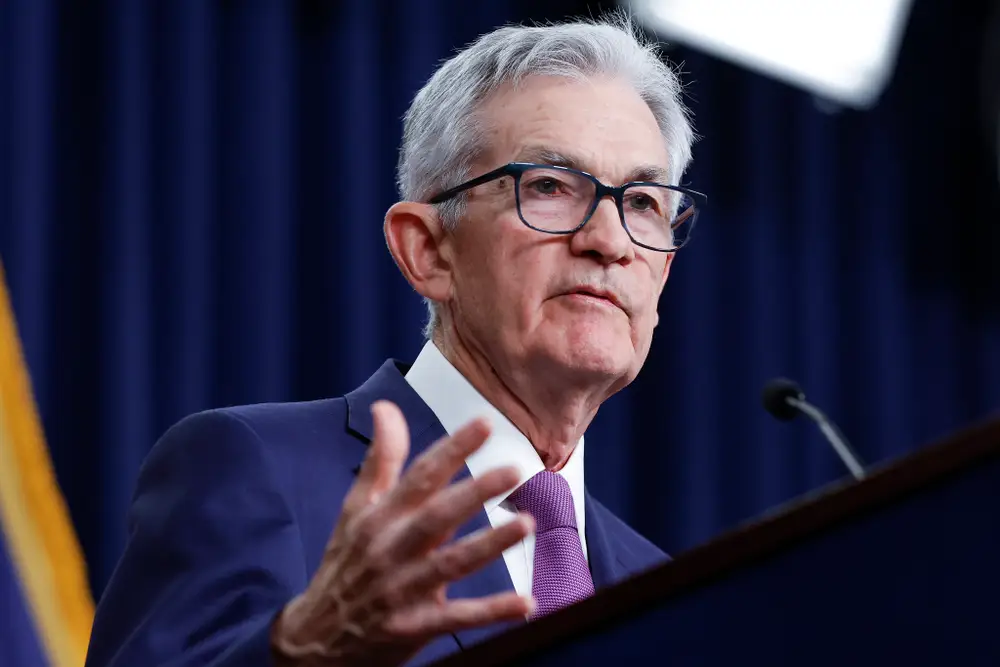The bond market is selling off after traders got their Fed forecasts wrong

US Federal Reserve Board Chairman Jerome Powell.
The bond market is in sell-off mode as traders reassess the path of interest rate cuts from the Federal Reserve.
Strong economic data in recent weeks and the potential for a Donald Trump victory in November have helped push bond yields higher and prices lower, with traders adjusting their outlooks after pricing in aggressive rate cuts following the Fed’s big 50 basis point move last month.
The 10-year US Treasury yield jumped to 4.22% on Tuesday, representing its highest level since July and a sharp increase from the 3.62% level it traded at in mid-September when the Fed delivered a jumbo rate cut.
The Bloomberg Aggregate Bond Index dropped 3% since mid-September, and long-term treasuries, as measured by the iShares 20+ Year Treasury Bond ETF, are down about 9% over the same time period.
Hot data dims rate-cut views
On the economic front, investors have focused on a recent string of hot data, which has whittled the odds of swift, steep cuts from the central bank at upcoming meetings.
A strong September jobs report showing a stunning 254,000 jobs added completely erased the odds of another 50 basis point cut.
The jobs data, combined with solid retail sales, slightly hotter-than-expected inflation, and the Atlanta Fed’s prediction of third-quarter GDP growth of 3.4%, has forced markets to rethink how eager the Fed will be to cut borrowing costs in order to support the economy.
Apollo chief economist Torsten Sløk argued in a note over the weekend that officials will “reverse course” and keep interest rates unchanged at next month’s meeting of the Federal Open Market Committee.
“The US consumer continues to do well, driven by solid job growth, strong wage growth, and high stock prices and home prices,” Sløk said.
Sløk says the key indicator to watch is the upcoming October jobs report.
“Look at the next nonfarm payrolls report. If we do get that at 150 or 200,000, we could easily get a scenario where the Fed will basically have to reverse course and begin to stay on hold,” Sløk told Bloomberg on Monday.
That would be a big surprise to traders, with the market pricing in a 90% chance of a 25-basis point interest rate cut from the Fed next month.
Fed officials, for their part, have indicated they’re likely to move cautiously, though more rate cuts are still their base case.
“So far, I haven’t seen any information that would suggest we wouldn’t continue to reduce the interest rate,” San Francisco Fed President Mary Daly said on Monday.
Other Fed officials had a similar message.
Minneapolis Fed President Neel Kashkari said he expects “modest cuts over the next quarters.” Dallas Fed President Lorie Logan said she expects interest rates will fall “gradually,” and Kansas City Fed President Jeff Schmid endorsed a “cautious and gradual” approach to cutting interest rates.
Markets see Trump win boosting rates
Meanwhile, a potential Trump win next month is seen as being inflationary due to his proposed policy of universal tariffs.
Tariffs have been the centerpiece of Trump’s economic proposals, which he insists would bring down costs, even though economists warn that taxes on imports will ultimately get passed on to consumers.
A resurgence in inflation would lead to a more hawkish Fed, which could pump the brakes on rate cuts or even raise interest rates again to offset rising prices.
“Should he re-take the White House in November, the dollar would probably rally sharply, at least in the near term, on expectations of higher US tariffs and interest rates,” Capital Economics said in a recent note.
Experts told B-17 that a Trump administration pursuing its most extreme campaign proposals would be a “seismic” shift for the US economy, leading to big impacts on inflation and Fed policy.






